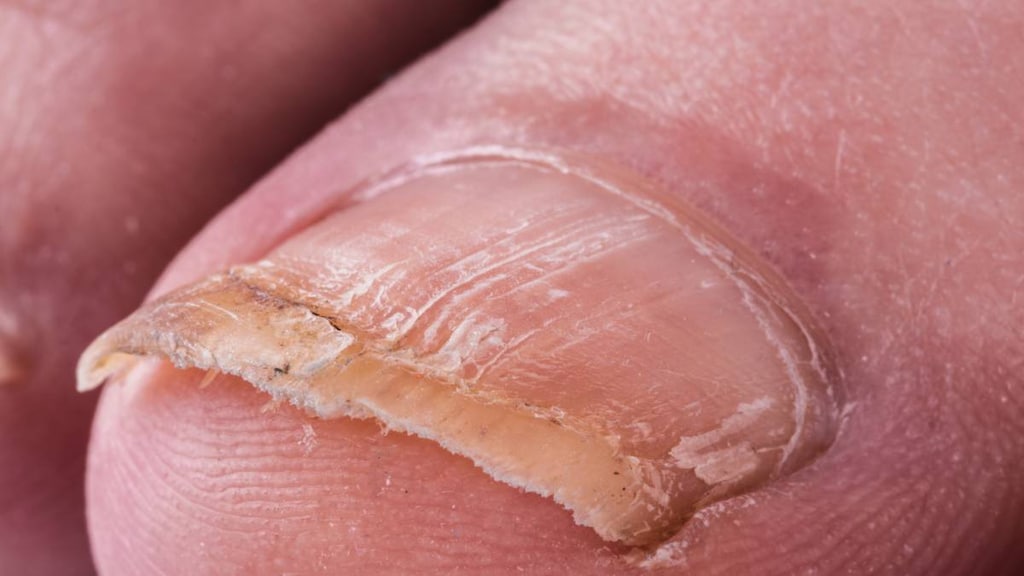
What is onychomycosis?
Onychomycosis is the medical term for a fungal infection of the toenails or fingernails. It may also be called tinea ungium.
What causes onychomycosis?
Onychomycosis may be caused by either:
- Dermatophytes (such as Trichophyton rubrum or T. interdigitale): the most common cause
- Yeasts, such as Candida albicans
- Molds, such as Scopulariopsis brevicaulis and Fusarium species.
Dermatophytes, yeasts, and molds are all members of the kingdom fungi. These fungi live in the environment. Trauma, cracks in the nail or surrounding skin, or certain medical conditions can allow these fungi to enter the nail and cause an infection.
Onychomycosis is more prevalent in people with:
- Athlete’s foot
- A nail injury, nail inflammation, or recent nail surgery
- A weakened immune system
- Circulation problems
- Diabetes
- Older age
- Sharing communal changing rooms or showers
- Wearing occlusive (closed-in) footwear most days
What are the symptoms of onychomycosis?
Symptoms may vary depending on the infecting type of fungus and the duration of the condition and can present in one of several patterns.
Symptoms may include:
- Discolored nails (either yellow, brown, or white)
- White or yellow streaks on the nail
- Crumbly, fragile, or cracked nails
- Flaky white patches and pits on the top of the nail
- Lifting of the edge of the nail
- Nail destruction
- Scaling under the nail
- Thickened nails
- Yellow spots appearing in the half-moon (lunula) part of the nail.
Onychomycosis may affect the nail bed, matrix or plate and toenails are affected more often than fingernails.
In some people, onychomycosis can limit mobility which can make some other conditions, such as diabetic foot ulcers or peripheral circulation problems worse.
How is onychomycosis diagnosed?
If you have symptoms that suggest a fungal nail infection, see a doctor. Your doctor will examine your nails and ask about any risk factors. They may take some nail clippings or scrape debris from under the nail to send to a mycology laboratory for microscopy and culture.
Several other conditions can mimic nail fungus and treatment will not be successful if there is another explanation for the nail condition.
How is onychomycosis treated?
Fungal nail infections can be difficult to treat, and it may take months to see results. Infections affecting less than 50% of one or two nails may respond to topical antifungal medications, but more extensive infections usually require an oral antifungal medication for several months.
Treatments may include:
- Topical antifungal nail treatments (eg, ciclopirox)
- Oral antifungals (eg, terbinafine or itraconazole)
- Laser therapy
- Photodynamic therapy.




